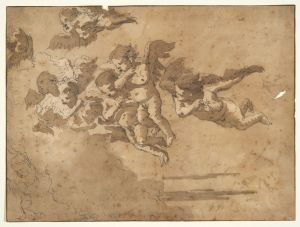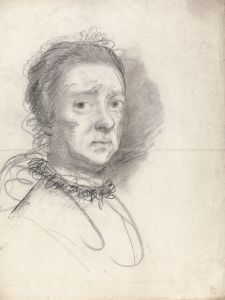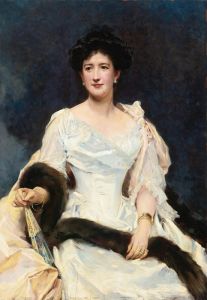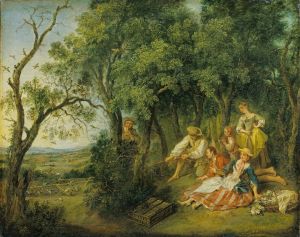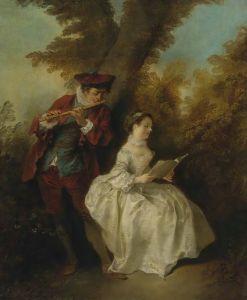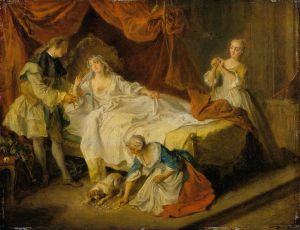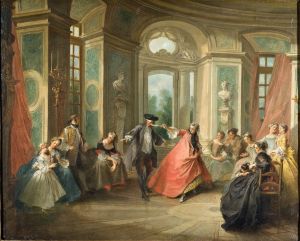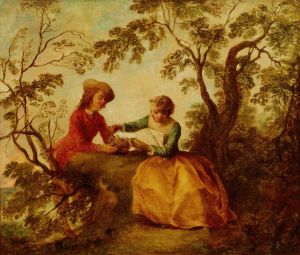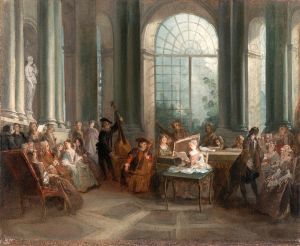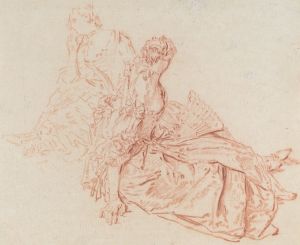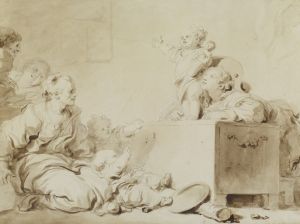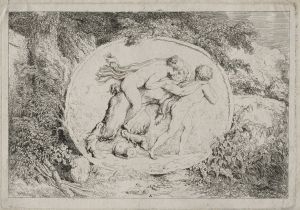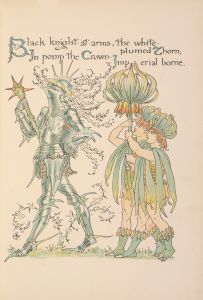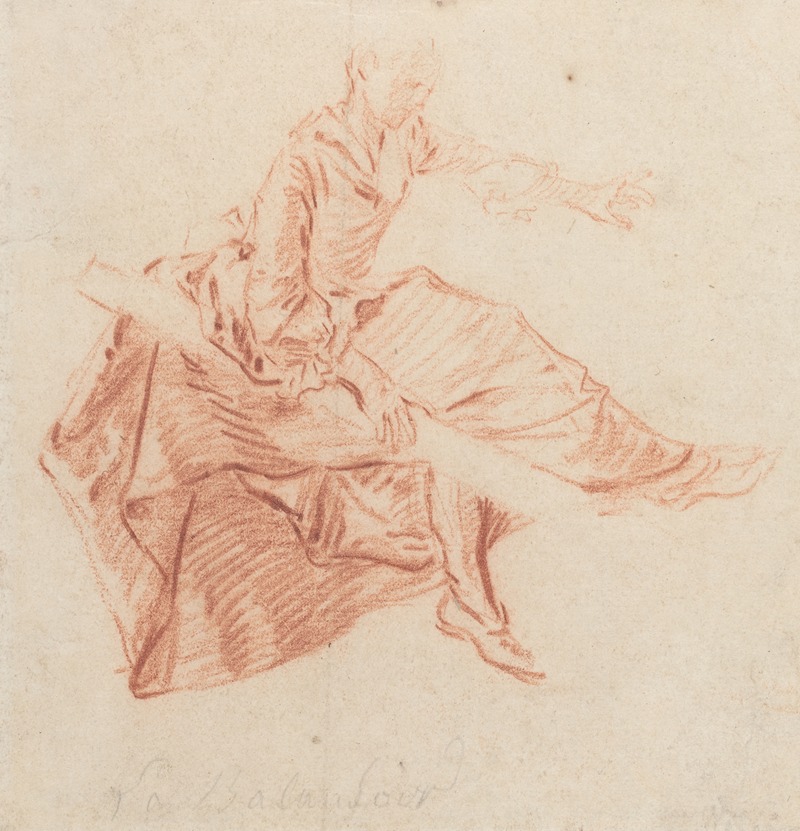
Lady Seated on a See-Saw
A hand-painted replica of Nicolas Lancret’s masterpiece Lady Seated on a See-Saw, meticulously crafted by professional artists to capture the true essence of the original. Each piece is created with museum-quality canvas and rare mineral pigments, carefully painted by experienced artists with delicate brushstrokes and rich, layered colors to perfectly recreate the texture of the original artwork. Unlike machine-printed reproductions, this hand-painted version brings the painting to life, infused with the artist’s emotions and skill in every stroke. Whether for personal collection or home decoration, it instantly elevates the artistic atmosphere of any space.
Nicolas Lancret's "Lady Seated on a See-Saw" is a notable work by the French Rococo painter, who was renowned for his genre scenes that often depicted the leisurely pursuits of the 18th-century French aristocracy. Lancret, born in 1690 and active until his death in 1743, was a contemporary of Antoine Watteau and was heavily influenced by him, though Lancret developed his own distinctive style that earned him significant acclaim during his lifetime.
"Lady Seated on a See-Saw" exemplifies Lancret's skill in capturing the playful and light-hearted aspects of Rococo art. The painting portrays a woman elegantly dressed in the fashion of the time, seated on a see-saw. The composition reflects the Rococo aesthetic, characterized by its lightness, elegance, and an emphasis on themes of love and frivolity. Lancret's use of soft colors and delicate brushwork enhances the whimsical nature of the scene, inviting viewers into a world of grace and charm.
The Rococo period, during which Lancret created this work, was marked by a shift away from the grandeur and formality of the Baroque era towards more intimate and decorative art. Artists of this period often focused on themes of romance, nature, and the pleasures of life, which is evident in Lancret's depiction of a leisurely activity such as a see-saw ride. This painting, like many of Lancret's works, captures a moment of everyday life, yet elevates it to a scene of elegance and sophistication.
Lancret's ability to convey the subtleties of human interaction and emotion is evident in "Lady Seated on a See-Saw." The painting not only showcases his technical prowess but also his keen observation of social dynamics and the nuances of courtly life. The artist's attention to detail, from the textures of the lady's clothing to the gentle play of light and shadow, demonstrates his mastery of the Rococo style.
While specific details about the provenance and current location of "Lady Seated on a See-Saw" are not widely documented, Lancret's works are held in high regard and can be found in major art collections and museums around the world, including the Louvre in Paris and the Wallace Collection in London. His paintings continue to be studied and appreciated for their contribution to the Rococo movement and their reflection of 18th-century French society.
Nicolas Lancret's legacy as a painter is cemented by his ability to capture the essence of his time with elegance and wit. "Lady Seated on a See-Saw" remains a testament to his artistic vision and his role in shaping the visual culture of the Rococo era. Through works like this, Lancret offers a window into the past, allowing contemporary audiences to experience the beauty and charm of a bygone era.





